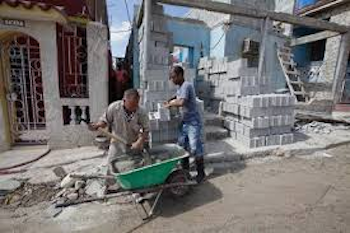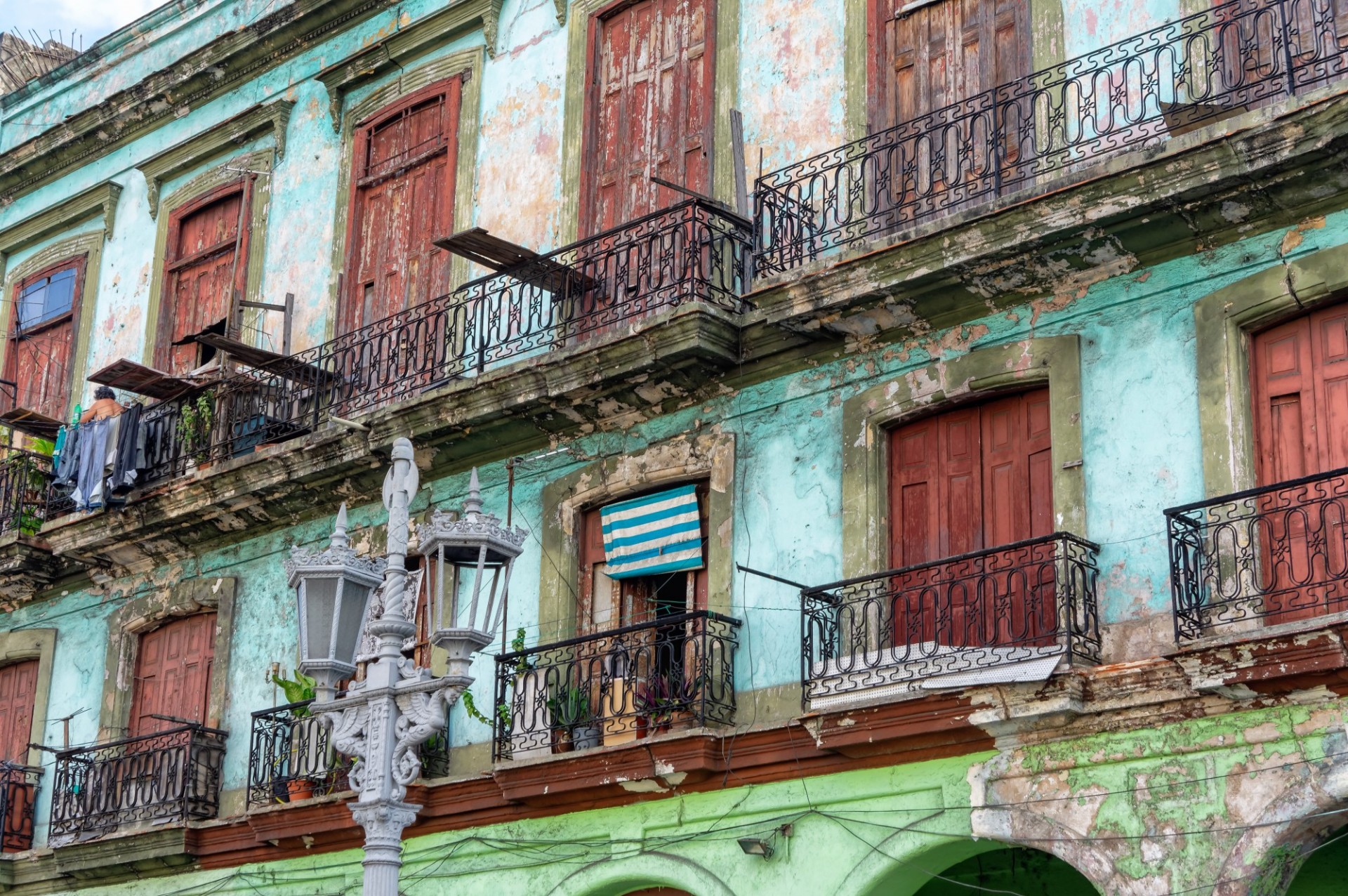Housing in Socialist Cuba and the Structural Reforms
In Cuba, the housing construction rate by the State has been much lower than the population growth rate; most homes are in regular or bad condition. What can Cuba do?
By Carmelo Mesa-Lago, Distinguished Professor Emeritus of Economics and Latin American Studies, University of Pittsburgh
Housing has been and is one of the main social problems of Cuba; some of its difficulties were inherited, others occurred during the Revolution. Something positive is that since 1960 those who were renters of housing that had been expropriated and paid rent to the State for twenty years, obtained the right of perpetual usufruct of the land, plus the ownership of their homes. That is why today 85% of Cubans own their homes.
On the other hand, at the end of 2018 the housing deficit almost reached 900,000 units. The rate of housing construction by the State has been much lower than the population growth rate; most homes are in regular or bad condition. These problems have been caused mainly due to national policies, but also by hurricanes. The result has been the aforementioned deficit, which is important and growing.
Homes Built and Units per 1,000 Inhabitants in Cuba (2006-2018)i
![See note [i] below the graph](/sites/horizontecubano.law.columbia.edu/files/styles/cu_crop/public/content/pics/CML%20Table%201%20housing.png?itok=NuXcCqvt)
[i] Graph 1 shows in the blue columns the number of homes built per year and in the red columns the ratio per thousand inhabitants. While 111 thousand homes were built in 2006, there were approximately 22 thousand built in 2016. The number or homes per capita has had an extraordinary drop - from 9.9 to about 1.9 per thousand in 2016. In fact, there is a sustained decrease in all the years presented from 2006 to the present.
The causes of the declining trend in the construction of housing are the lack of construction materials, the export of such materials and cement, zero or low maintenance and the substantial repairs of existing housing, the second lowest budget allocation among social services, the low workforce in the sector because of low wages, problems in the acquisition of spaces and the recurring cyclones that affect the country.
As part of the structural reforms of President Raúl Castro and subsequent measures, the housing reform of 2011 has reversed many of the old negative policies: it allows the sale or purchase of a house at market prices (a second one in the countryside or the beach); guarantees the right to inheritance, also the transfer of homes to relatives of Cuban emigrants; reintroduces the mortgage for a second residence or empty lot, as well as collateral; authorizes the population to build their own houses; stimulates the real estate market; releases the sale of construction materials and their prices for the population; grants subsidies to the most needed - especially those affected by hurricanes - and microloans to build or repair homes; authorizes real estate agents; converts State buildings into private homes and sells unfinished State buildings to individuals to finish them within a specified period; approves the rental of houses or private rooms to tourists and requires the registration and update of records in the land registry office. All these measures have contributed to a boom in private construction and repair.
The government’s support for the sale of homes has allowed that part of Cubans who receive remittances from abroad or who work in the private sector - for example, those who lease their homes to foreign tourists, operate family restaurants -, can acquire housing, for use either as a residence or as a workplace, all of which have generated considerable repair or maintenance of the housing stock.

On the other hand, the housing market is sui generis because it operates in currencies, thus many transactions are effected in CUC and a good portion in USD if the property is large and if its owners or buyers live abroad. But wages in Cuba are low and are paid in CUP and the entire legal process for buying and selling is in CUP. It is very difficult in Cuba for the government to grant a loan for home acquisition, those are only granted to people in need who own homes destroyed or damaged by hurricanes or to residents of slums.
Sellers must pay a 4% tax on the sale price of the home, but its value is often undeclared. To reduce the tax, the sale price is set as the “legal” value stated in the deed of ownership, a fraction of its true value. To address this problem, legislation has been enacted that determines the real price of housing.
Better results were achieved by China, another socialist country under the government of the communist party, which has had a much more flexible housing policy than Cuba’s. The Chinese Property Act of 2007 allows domestic and foreign investors to construct on state-owned land and, once completed, grants the right to sell, lease and mortgage for 70 years (automatically renewable for residents) and 40-50 years for industrial and commercial companies.
The Chinese model now seems inconceivable, but Cuba could eliminate or liberalize many of the restrictions that remain an impediment to housing development. To solve the official deficit of 883,050 homes, the government would have to build 44,000 units annually in the next 20 years, something that is unlikely. The obvious solution is, therefore, to give more support to the construction and repair of private homes.
The eradication or simplification of excessively bureaucratic procedures to authorize private construction, subsidies, etc., would generate significant savings in state salaries, which could be used to grant more microloans and subsidies. The State should experiment with the progressive and flexible model proposed in Cuba in order to reduce costs and improve the quality of housing.
The 4% tax on the real value of the sale of homes could be reduced by half, which would encourage the payment of said tax and, therefore, reduce state inspections and bureaucracy. Legally allowing Cubans abroad to invest in housing for their relatives in Cuba would instill certainty in a practice that is now illegal and risky. International NGOs specializing in low-cost housing should also be authorized to help Cubans. Other measures would be to give more freedom to real estate brokers, more access to the Internet and allow architects to work in the private sector.
But the crux of the problem is to increase production and economic growth that have been languishing for years. To do this it is essential to accelerate and deepen the structural reforms that have stagnated and, in some cases, reversed. If these policies are not applied, the current housing crisis will worsen, further lacerating the Cuban people.
Note: This is a summary of a chapter entitled “Housing in Socialist Cuba and Raúl Castro’s Reforms,” from Cuba Facing Forward: Balancing Identity and Development in the Twenty First Century, David White et al, eds., Boston, Massachusetts, Affordable Housing Institute, 2018, pp. 178-205.
CML Housing (EN) (ed) + Access .pdf 222.75 KB
Carmelo Mesa-Lago is Professor of Distinguished Service Emeritus in Economics and Latin American Studies at the University of Pittsburgh, visiting professor/researcher and lecturer in 40 countries, and author of 92 books and 300 academic articles published in seven languages in 34 countries. Former President of the Association of Latin American Studies, member of the National Academy of Social Security in the U.S. and of the editorial boards of six academic journals. Recipient of the Decent Work Award from the International Labor Organization, shared with Nelson Mandela. http://www.mesa-lago.com/

